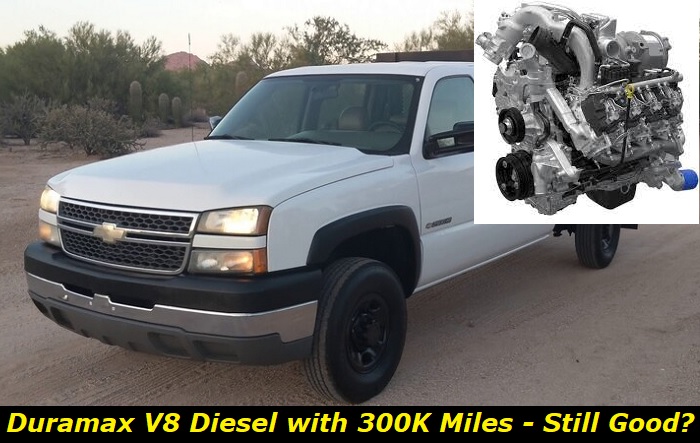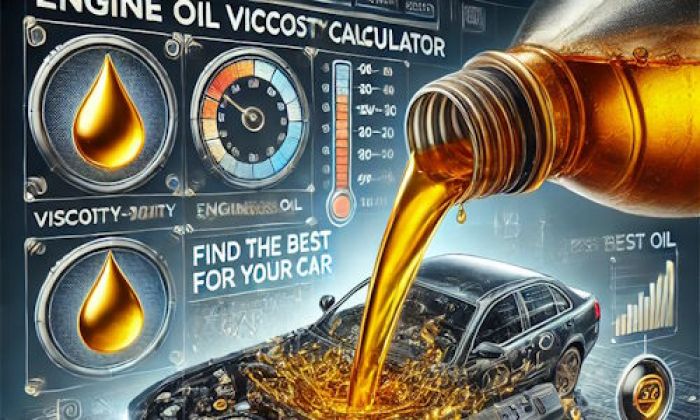When it comes to the Duramax engine family, we all tend to think about those wonderful old V8 machines that could live forever. But the family still exists and is still manufactured and developed. Fortunately, the 4-cylinder 2.5 and 2.8 engines were discontinued but the 3.0L V6 is still used in new vehicles after the major update in 2023.
Key features and my opinion about the engine
- Production years:2001-now
- Average lifespan of Duramax V8:240,000-280,000 miles
- Fuel supply type:Common Rail
- Power range:250-550 hp
- Fuel efficiency:average
- Engine block material:cast-iron
- Engine reliability score:medium
- The most common problems:DPF and EGR problems, weak sensors, injectors contamination, fuel pump problems.

Key facts about the V8 Duramax engine family
Once again, I'm not talking today about small 4-cylinder or V6 Duramax engines. They just got the name of this family but they are absolutely different and will most likely never reach 300,000 miles at all. My sphere of investigation today is exactly the old Duramax engines with 8 cylinders and 6.6 liters of displacement.
There were several models of cush engines starting in 2001 and up to 2016. The engine had such codes: LB7, LLY, LBZ, LMM, LGH, and finally LML. All these engines are 6.6 liters in size and all are V8, each of these engines deserves your attention. Updates only made them better and aimed to solve some common issues.
Here are some things that were in common for all V8 Duramax engines:
- these are V8 engines with OHV head construction and 4 valves per cylinder;
- all engines are turbocharged and they all have intercoolers to improve efficiency;
- they all have one of the best diesel injection - common rail type;
- they all have cast-iron blocks and aluminum heads, they are pretty repairable;
- the power is between 250 and 400 horsepower depending on the version;
- the peak torque may be up to 765 lb-ft and even more after some tuning.
The key model for all generations was the Silverado HD and also Sierra HD. But the engine was used for a dozen of other models like Chevy Kodiak, Express, GMC Savana, Topkick, and even Hummer H1 Alpha. This wasn't the most popular engine made by GM, so gasoline versions were more wanted. But the Duramax family became a living legend thanks to its toughness and durability.
Also, these engines consume much less fuel than GM gas engines with approximately the same power and torque. Although they are much more expensive in maintenance and repair, these engines save up to 50% of your money on fuel and it may actually make a huge difference. Also, the significant advantage of V8 Duramax engines is their high torque. It's great for towing and hauling without any risks for the engine itself.
Are 300,000 miles too much for a Duramax engine?
Well, it's yes and no depending on the situation. Actually, 300,000 miles is a lot for any engine and you never know what may happen with such a machine within the next 1000 miles. But the Duramax V8 is the engine that is so tough it can still go a lot after it hits this milestone.
I believe the average lifespan of any model of the V8 Duramax is about 300K miles. But it certainly can be more. I've seen Silverado trucks with over 500,000 miles on their odometers and owners said that the engine was original and it hadn't asked for any serious repairs.
But does it mean that you may easily buy a truck that is 300,000 miles now and expect it to last up to half a million miles? Of course, no! You can never know what happens with the truck after it reached 300,000 miles even if it has the durable Duramax V8 under its hood. You are playing a lottery and it should be worth it in terms of the price of the vehicle.
But if you've owned this truck for many years and given it the best maintenance and avoided abuse at all costs, then you may still use the vehicle for another 100,000 miles or even more.
If you are buying a high-mileage Duramax V8, what should you look at?
Let's imagine, you still want to buy a truck powered by the Duramax V8 engine that has 300,000 miles on it. First of all, look at the truck itself. At this mileage, it will show you the signs of bad service and neglected maintenance intervals. In such trucks, the body will suffer from corrosion, the interior will be almost destroyed and the engine will be leaking from all holes. Taking such a truck even for free is too expensive.
Here's what you should check:
- The overall condition. Pay attention to the engine bay. If you see any leaks, this is bad. If the engine compartment is clean as new, it's also bad - someone cleaned it to hide all the leaks and other issues.
- Look at the history records. Currently, you can access history records for any vehicle using VIN. You may buy a Carfax report or use any other online service to get the info about how the truck was serviced and if it had some road accidents.
- Check the exhaust pipe. A dying Duramax V8 engine will produce a lot of smoke, especially when idling and accelerating. Look at the pipe and ask someone to press the gas pedal. If you see a lot of black or grey smoke, avoid buying this vehicle.
- Listen to the work of the engine. Any signs of serious rattling, vibration, or uneven work may mean that the engine requires expensive repairs.
- Test-drive the vehicle. Duramax engines are crazy and if they are sluggish on the road, you may be sure they are not OK and actually feeling bad. Maybe they are even dying.
These are the signs that the 300,000-mile Duramax V8 engine is not worth your money. If you found a really good deal and your hands are itchy to grab the vehicle, calm down and check it thoroughly. Repairing a broken Duramax engine will cost you a fortune. As I said earlier, buying an almost-dead Duramax engine even for free is too expensive.
What are the common problems with the Duramax 6.6 V8 engines?
I've compiled a list of the most common issues that you may encounter in a high-mileage Duramax V8 engine. I will not write a lot about each of them but still will say several words to make it clear for you.
So, here are the common problems you may need to repair:
1. High-pressure fuel pump
The engine uses diesel direct injection with the common rail, so it needs huge pressure of the fuel. It uses two pumps. While the low-pressure pump in the fuel tank works well and long, the high-pressure pump may require repair pretty often. And it's not that cheap to repair or replace.
2. Overall injection problems
Not a single common rail system that already has 300K miles on it is going to be reliable. It may break at any time leaving you stranded on the road. Unfortunately, the repairs of the Duramax common rail system are going to cost you quite some money.
3. Oil consumption
Any engine that has 300K miles on it is almost dead. Its piston rings and valve seals are living their last days and can fatally fail at any moment. Usually, at 300,000 miles, Duramax V8 engines are already consuming quite a lot of oil. And this consumption is going to develop until it gets too high for proper use.
Another problem is that replacing the rings and seals is possible but extremely expensive. Labor is going to cost you a fortune and a half.
4. Glow plugs
The plugs in these engines are not durable. They need to be changed quite often and it wouldn't be a huge problem unless they cost like a part for Boeing 737. I don't know why diesel engine parts are so highly expensive. Even changing the oil in such an engine costs three or four times more than in a gas-powered V8.
5. Water pump fails earlier than you expect
The timing system here is gear driven, so no belts or chains have to be replaced. It means that you will not remember the water pump that is not immortal at all. Every 80,000 miles, you should replace the water pump. Otherwise, it will secretly fail and your engine temperature will skyrocket in minutes of driving.
Final thoughts
The Duramax V8 engine is one of the most reliable and durable engines in the world of diesel machines. Almost any version of it can easily go 300,000 miles. But after that, you never know how many miles the truck can handle. So, buying an engine with that many miles on the odometer is a crazy thing to do.
If you've owned such a truck for a long time and given it the best maintenance and careful driving, then, most likely, you will be able to drive it another 100K miles or so.
About the authors
The CarAraC research team is composed of seasoned auto mechanics and automotive industry professionals, including individuals with advanced degrees and certifications in their field. Our team members boast prestigious credentials, reflecting their extensive knowledge and skills. These qualifications include: IMI: Institute of the Motor Industry, ASE-Certified Master Automobile Technicians; Coventry University, Graduate of MA in Automotive Journalism; Politecnico di Torino, Italy, MS Automotive Engineering; Ss. Cyril and Methodius University in Skopje, Mechanical University in Skopje; TOC Automotive College; DHA Suffa University, Department of Mechanical Engineering






Add comment